

Hola querido hiver.
La Escuela Museo de Origami Zaragoza es el primero de estas características que se ha creado en Europa. Ocupa la planta superior del Centro de Historias y en esta publicación te voy a enseñar una primera parte.

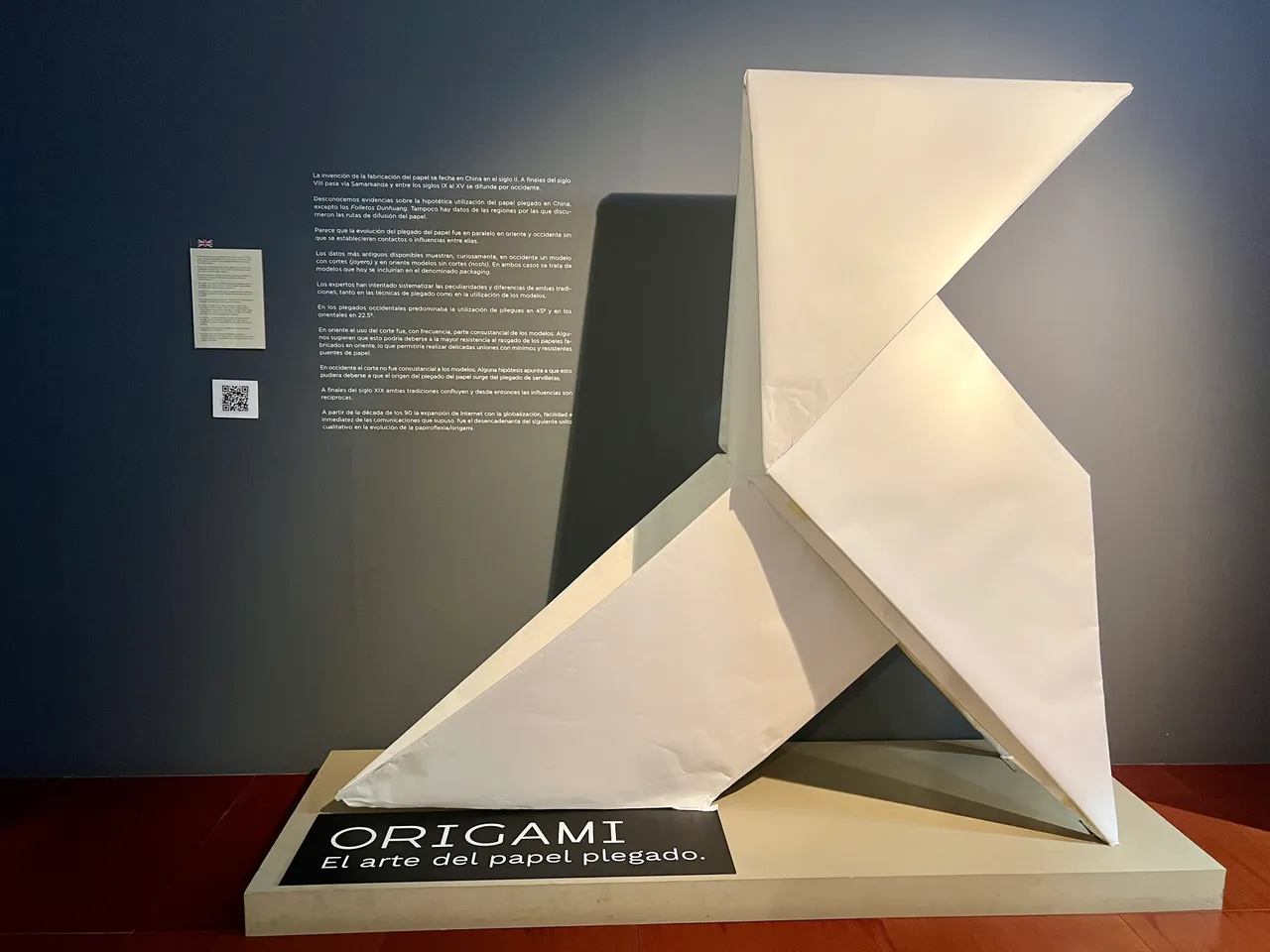
Por si no lo sabes, se denomina origami al arte del papel plegado. Eso que todos hemos hecho de niños emulando pajaritas, aviones que volaban o barcos que flotaban en los charcos.
No se sabe cuándo el papel comenzó a ser plegado con un sentido artístico, pero parece ser que tanto en el oriente asiático donde se inventó como en occidente evolucionó de forma paralela.



La primera parte de la Escuela Museo es una gran línea de tiempo. En ella tenemos la evolución del origami en oriente en la parte superior, con fondo en blanco, y la evolución en occidente en la parte inferior, con fondo negro. De este modo podemos comparar una y otra técnicas.


Desde finales del siglo XIX ambas tradiciones confluyen retroalimentándose una de otra hasta que en la era de internet el conocimiento global ha proporcionado el establecimiento de relaciones entre aficionados al origami de todos los rincones del mundo.


Como reglas generales los pliegues orientales predominantes eran los de 22.5º y usaban cortes. Por su parte, en occidente la tendencia era a plegar en 45º y sin cortes del papel.


Una curiosidad que aprendí es que el escritor y filósofo español Miguel de Unamuno incluyo en una de sus obras unos Apuntes para un tratado de cocotología (cocotte en francés es una pajarita de papel), donde desarrolla hasta cuatro géneros diferentes de pajaritas. La diversificación de los géneros es menos moderna de lo que pensamos, jeje.


Otro dato que me impresiono es el monumento a Sadako Sasaki, una niña japonesa que falleció como consecuencia de la leucémia causada por la bomba atómica de Hiroshima. Había intentado plegar 1000 grullas de papel porque la tradición decía que eso la curaría. Solo llego a 644. Entonces, sus compañeros plegaron las que le faltaban como un homenaje e iniciaron un movimiento pacifista que continua hasta el presente.
El monumento está en el Parque de la Paz de Hiroshima y hasta él continúan llegándotelo miles de grullas plegadas de todo el mundo.


La última parte de la sala tiene una exposición de obras realizadas por componentes del Grupo Zaragozano de Papiroflexia. Esta tertulia de entusiastas plegadores de papel fueron el germen de lo que derivó finalmente en esta Escuela Museo.

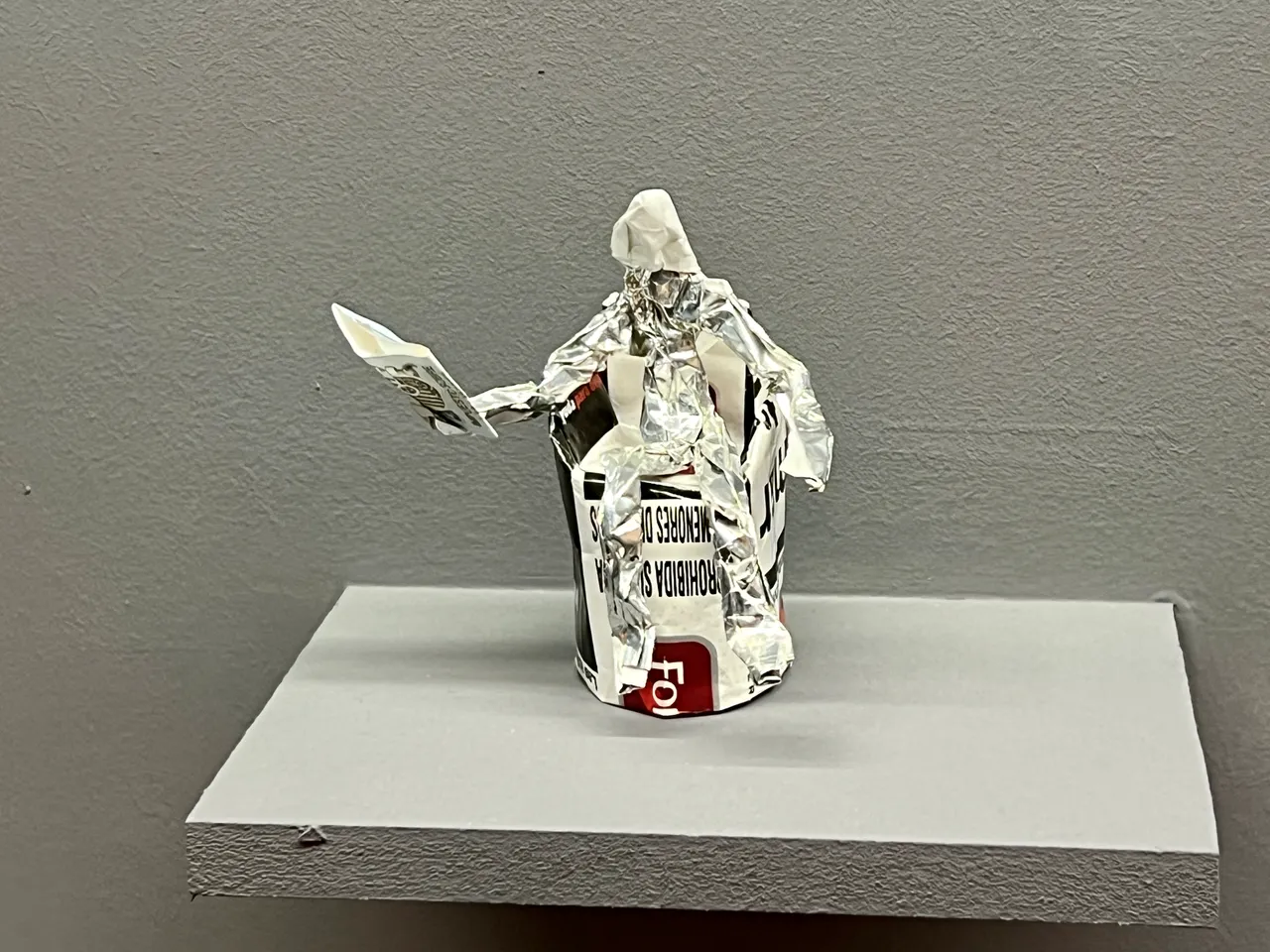

Entre antiguos recortes de periódicos, revistas y fotografías encontramos figuras que en su momento fueron premiadas en diversos concursos.
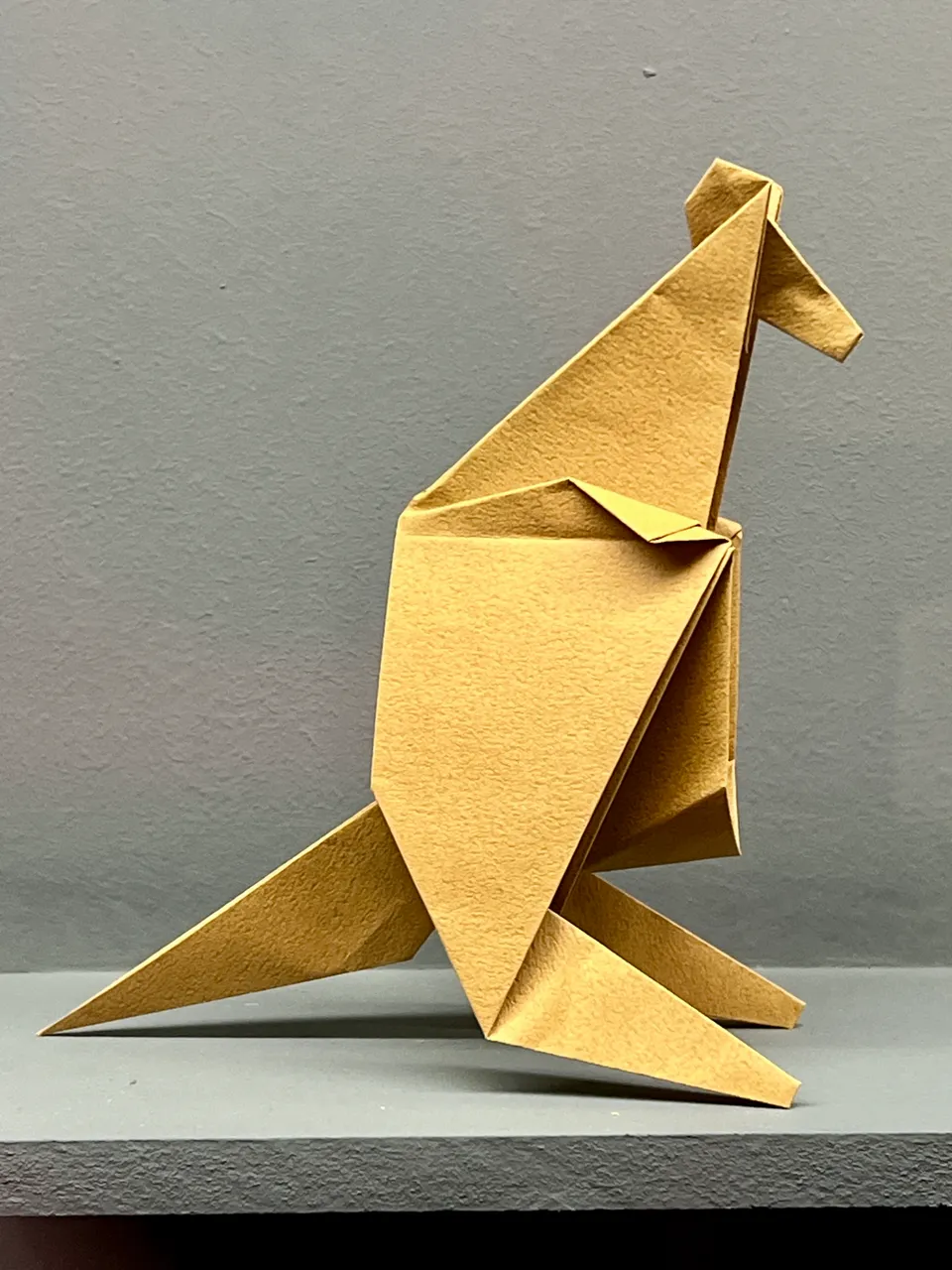


Pasamos a una pequeña y oscura sala donde nos enseñan la clasificación de las técnicas o estilos de la papiroflexia: elemental, esencial, modular, geometríco, hiperrealista, escultórico y orgánico.

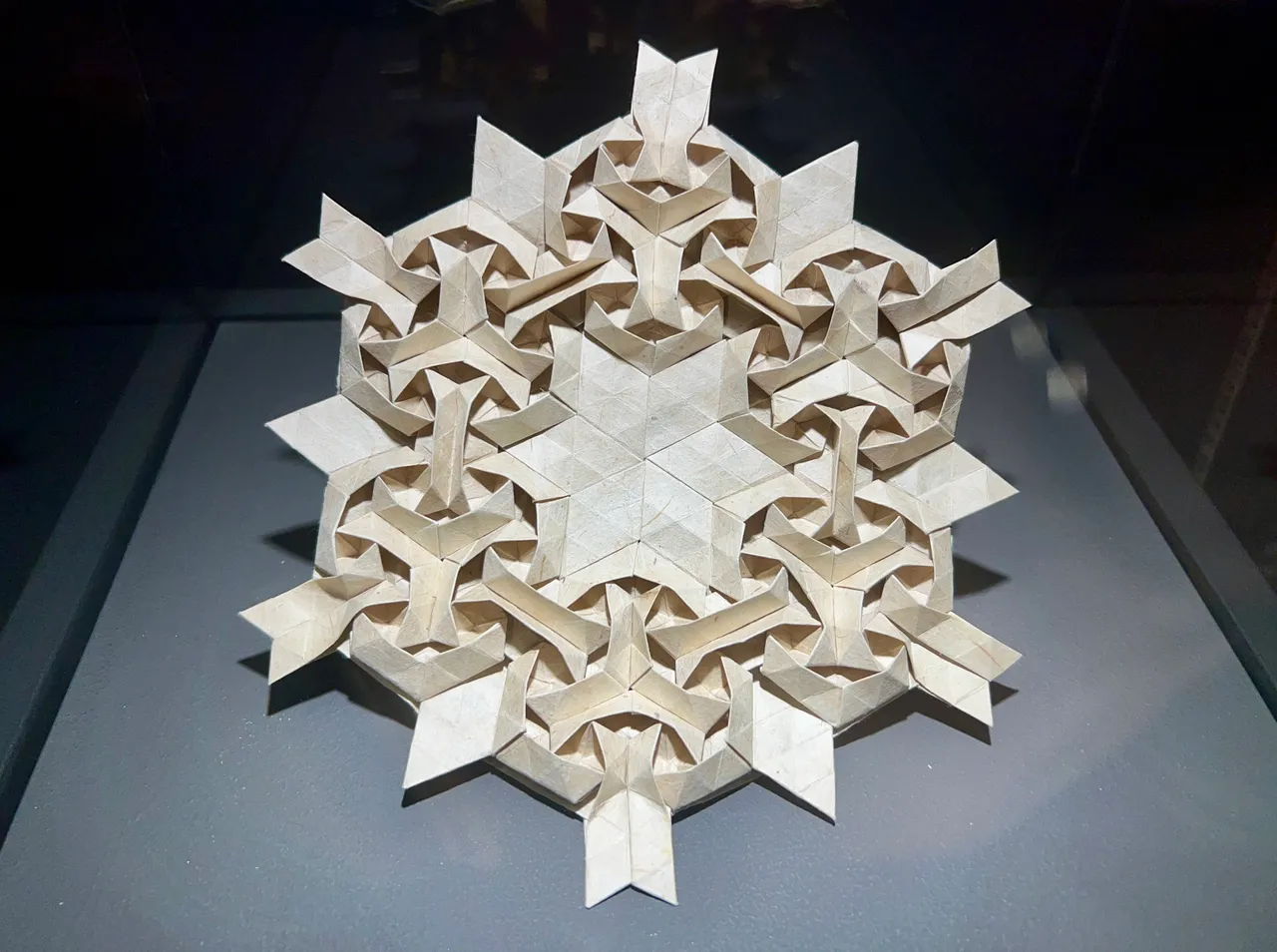
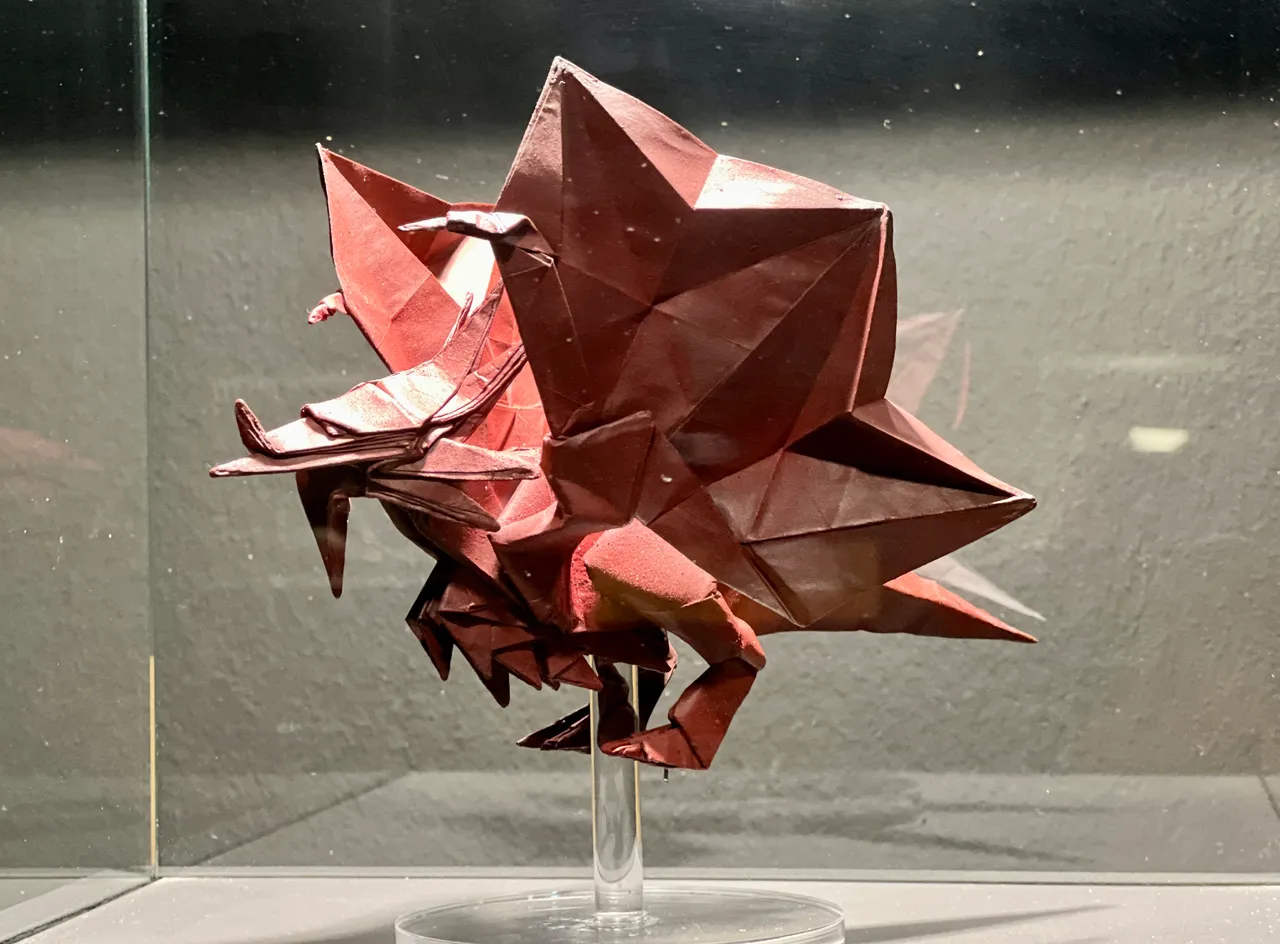
¿Te atreverías a clasificar todas las figuras que aparecen en esta publicación?



Si ademas combinamos el papel con los efectos que causa la luz sobre o tras él se consiguen obras artísticas de gran dificultad técnica e idéntica belleza.
Hasta la próxima publicación. Mientras tanto, ¡cuídate!

Herramientas: Cámara iPhone 13 Pro, editor de fotos Mac.
Mis publicaciones en Worldmappin pinchando aquí
Si te gusta lo que publico, únete a mi Fanbase pinchando aquí

©️Copyright 2024 Paloma Peña Pérez. Todos los derechos reservados.




Hi, dear hiver.
The Origami School Museum Zaragoza is the first of its kind to be created in Europe. It occupies the upper floor of the History Centre and in this publication I am going to show you a first part.


In case you don't know, origami is the art of folding paper. That we all did as children emulating little birds, flying planes or boats floating in puddles.
It is not known when paper began to be folded in an artistic sense, but it seems that both in East Asia, where it was invented, and in the West it evolved in parallel.



The first part of the Museum School is a big timeline. In it we have the evolution of origami in the East in the upper part, with a white background, and the evolution in the West in the lower part, with a black background. In this way we can compare one technique with the other.


Since the end of the 19th century, both traditions have converged, feeding off each other until the internet era, when global knowledge has provided the establishment of relations between origami enthusiasts from all corners of the world.


As a rule of thumb, the predominant oriental folds were 22.5° and used cut-outs. In the West, on the other hand, the tendency was to fold at 45º and without paper cuts.


A curiosity I learned is that the Spanish writer and philosopher Miguel de Unamuno included in one of his works some Apuntes para un tratado de cocotología (Notes for a treatise on cocotology, cocotte in French is a paper bow tie), where he develops up to four different types of bow ties. The diversification of genres is less modern than we think, hehe.


Another thing that impressed me is the monument to Sadako Sasaki, a Japanese girl who died as a result of leukaemia caused by the Hiroshima atomic bomb. She had tried to fold 1000 paper cranes because tradition said it would cure her. She only managed 644. So her classmates folded the missing ones as a tribute and started a peace movement that continues to this day.
The memorial is in the Hiroshima Peace Park and thousands of folded cranes continue to arrive from all over the world.


The last part of the room has an exhibition of works by members of the Grupo Zaragozano de Papiroflexia (Zaragozan Origami Group). This group of enthusiastic paper folders was the seed of what eventually became this School-Museum.



Among old newspaper clippings, magazines and photographs we find figures that were once awarded prizes in various competitions.



We go into a small, dark room where we are shown the classification of origami techniques or styles: elemental, essential, modular, geometric, hyperrealist, sculptural and organic.



Would you dare to classify all the figures that appear in this publication?



If we also combine the paper with the effects caused by the light on or behind it, we obtain artistic works of great technical difficulty and identical beauty.
Until the next post. In the meantime, take care!

Tools: iPhone 13 Pro camera, Mac photo editor.
Translated with DeepL
My publications in Worldmappin by clicking here
If you like my content, join my Fanbase clicking here

©️Copyright 2024 Paloma Peña Pérez. All rights reserved.

